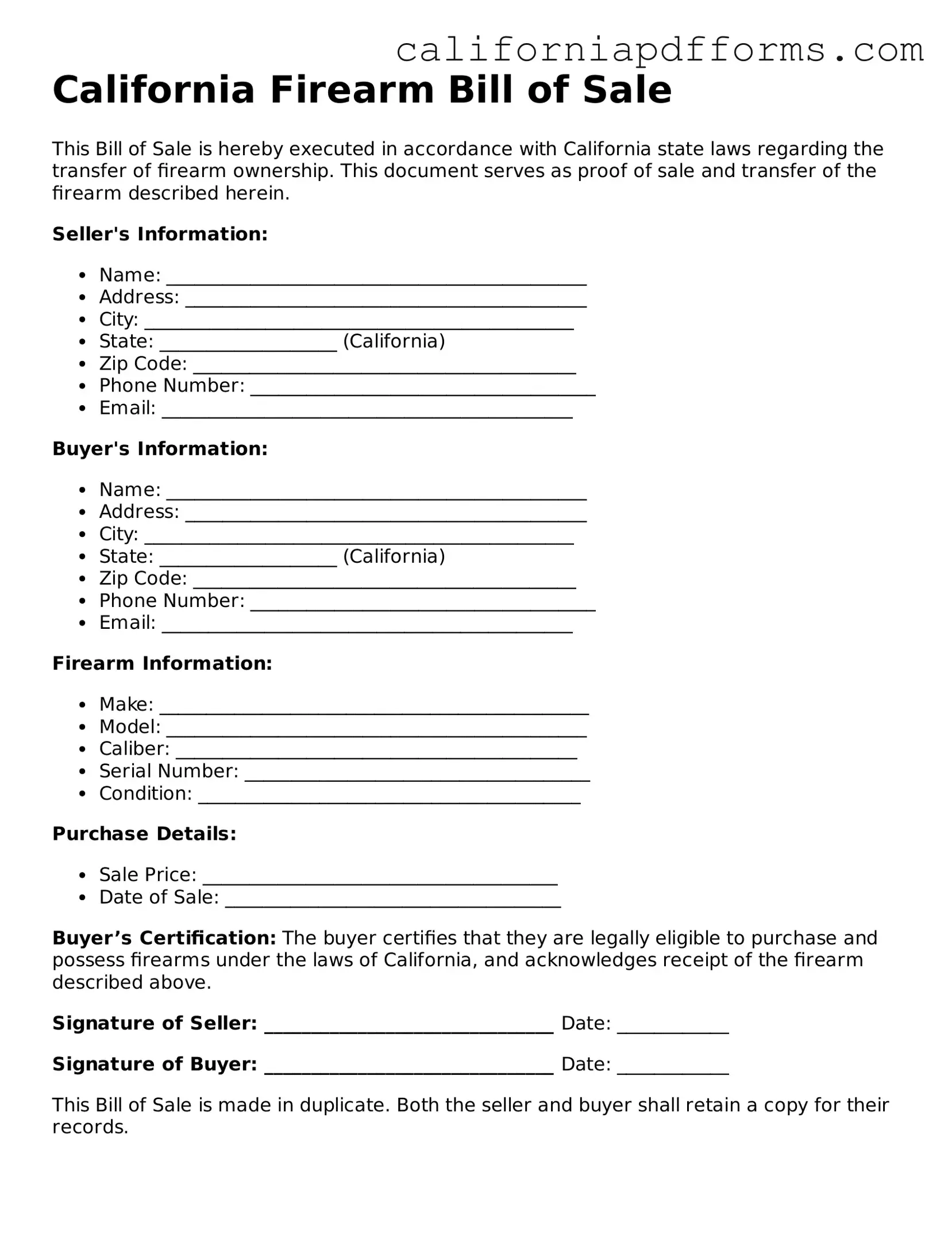The California Firearm Bill of Sale form is a legal document that records the sale or transfer of a firearm between a seller and a buyer. This form serves as proof of the transaction and includes essential details about the firearm, such as its make, model, and serial number. It also captures the names and contact information of both parties involved. While not always required by law, having a bill of sale is a good practice to protect both the buyer and seller.
Is the Firearm Bill of Sale required in California?
In California, a Firearm Bill of Sale is not legally required for private sales of firearms. However, it is highly recommended. This form provides a clear record of the transaction, which can be beneficial in case of disputes or legal issues in the future. Additionally, certain types of firearm transfers, like those involving dealers or specific types of firearms, may require additional documentation.
When filling out a California Firearm Bill of Sale, be sure to include the following information:
-
Seller's Information:
Full name, address, and contact details.
-
Buyer's Information:
Full name, address, and contact details.
-
Firearm Details:
Make, model, caliber, and serial number of the firearm.
-
Sale Price:
The agreed-upon price for the firearm.
-
Date of Sale:
The date when the transaction takes place.
Including this information ensures that both parties have a clear understanding of the transaction and can refer back to the document if needed.
Do I need to have the Firearm Bill of Sale notarized?
No, notarization is not a requirement for a Firearm Bill of Sale in California. However, having the document notarized can add an extra layer of security and authenticity to the transaction. It may also help in case any legal issues arise later. If both parties feel more comfortable with a notarized document, it can be a worthwhile step.
What should I do with the Firearm Bill of Sale after the transaction?
After completing the transaction, both the buyer and seller should keep a copy of the Firearm Bill of Sale for their records. It's advisable to store it in a safe place, as it serves as proof of ownership and the terms of the sale. In the event of any future inquiries or legal matters regarding the firearm, having this document on hand can be very helpful.
